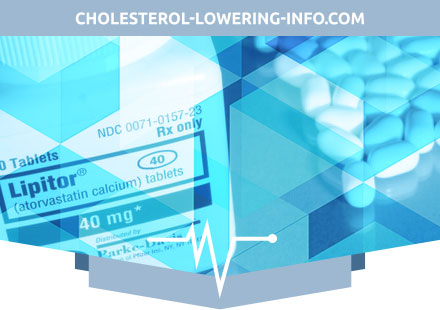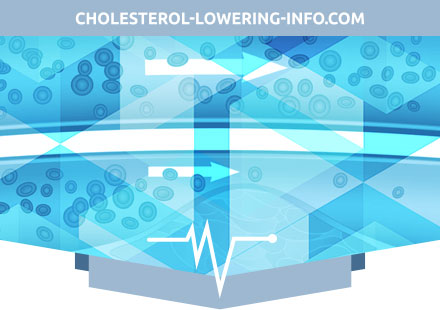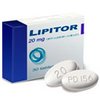Lipitor: indications for use
Primary hypercholesterolemia type IV), resistant to dietary treatments.
Homozygous hereditary hypercholesterolemia (as a supplement to lipid-lowering therapy, including autohemotransfusion of blood purified from LDL).
Also indications for treatment are diseases of the cardiovascular system in the presence of dyslipidemia, secondary prophylaxis with the aim of reducing the overall risk of death, myocardial infarction and re-hospitalization for angina pectoris.
Active ingredient, group
Atorvastatin, Lipid-lowering agent - HMG-CoA reductase inhibitor
Dosage Form
Coated tablets
Contraindications
Hypersensitivity to the components of the drug, active liver disease (including active chronic hepatitis, chronic alcoholic hepatitis), increased activity of liver transaminases (more than 3 times) of unclear genesis, liver failure (severity A and B on the scale of Child -Pu), pregnancy, lactation.

With caution. Severe electrolyte imbalance, endocrine and metabolic disorders, alcoholism, history of liver disease, arterial hypotension, severe acute infections, uncontrolled seizures, extensive surgical interventions, trauma, children's age (efficacy and safety of use have not been established).
How to apply Lipitor: dosage and treatment
Inside, take at any time of the day, regardless of the meal. The initial dose is 10 mg once a day. Change the dose should be at intervals of at least 4 weeks. The maximum daily dose is 80 mg in 1 reception.
In case of primary hypercholesterolemia and combined (mixed) hyperlipidemia, 10 mg is administered once a day. The effect of treatment is shown within 2 weeks, the maximum effect is observed within 4 weeks.
In case of homozygous familial hypercholesterolemia, 80 mg is prescribed 1 time per day (decrease in the content of LDL by 18-45%).
Before starting therapy, the patient should be prescribed a standard cholesterol-lowering diet, which he must follow during treatment.
Pharmacological action of Lipitor
Lipid-lowering agent from the group of statins. Selective competitive inhibitor of HMG-CoA reductase - an enzyme that converts 3-hydroxy-3-methylglutaryl coenzyme A to mevalonic acid, which is a precursor of sterols, including cholesterol.
TG and cholesterol in the liver are included in the composition of VLDL, enter the plasma and are transported to peripheral tissues. LDLs are formed from VLDL during interaction with LDL receptors.
The drug reduces plasma cholesterol and lipoprotein levels by inhibiting HMG-CoA reductase, cholesterol synthesis in the liver and increasing the number of “liver” LDL receptors on the cell surface, which leads to increased uptake and catabolism of LDL.
Reduces the formation of LDL, causes a pronounced and persistent increase in the activity of LDL receptors. Reduces the level of LDL in patients with homozygous familial hypercholesterolemia, which usually does not respond to therapy with lipid-lowering drugs.
Reduces total cholesterol by 30-46%, LDL - by 41-61%, apolipoprotein B - by 34-50% and TG - by 14-33%; causes an increase in cholesterol-HDL (high density lipoprotein) and apolipoprotein A.
The drug Lipitor dose-dependently reduces the level of LDL in patients with homozygous hereditary hypercholesterolemia, resistant to the treatment of other hypolipidemic drugs.
Treatment with Lipitor significantly reduces the risk of ischemic complications (including the development of death from myocardial infarction) by 16%, the risk of re-hospitalization for angina, accompanied by signs of myocardial ischemia, by 26%.
Atorvastatin has no carcinogenic and mutagenic effects.
Side effects of Lipitor
On the part of the nervous system: most often 2% - insomnia, dizziness; less than 2% - headache, asthenia, malaise, drowsiness, unusual dreams, amnesia, paresthesia, peripheral neuropathy, amnesia, emotional lability, ataxia, facial nerve paralysis, hyperkinesis, depression, hyperesthesia, loss of consciousness.
On the part of the sense organs: less often 2% - amblyopia, tinnitus, dry conjunctiva, disturbance of accommodation, bleeding in the eyes, deafness, glaucoma, parosmia, loss of taste, taste perversion.
On the part of the digestive system: usually 2% - nausea; less than 2% - heartburn, constipation or diarrhea, flatulence, gastralgia, abdominal pain, anorexia, decreased or increased appetite, dry mouth, belching, dysphagia, vomiting, stomatitis, esophagitis, glossitis, erosive and ulcerative lesions of the oral mucosa, gastroenteritis, hepatitis, biliary colic, cheilitis, duodenal ulcer, pancreatitis, cholestatic jaundice, abnormal liver function, rectal bleeding, melena, bleeding gums, tenesmus.
On the part of the respiratory system: more often 2% - bronchitis, rhinitis; less often 2% - pneumonia, dyspnea, bronchial asthma, nosebleeds.
From the side of the cardiovascular system: more often 2% - chest pain; rarely 2% - palpitations, vasodilation, migraine, postural hypotension, increased blood pressure, phlebitis, arrhythmia, angina pectoris.
From the hematopoietic system: less often 2% - anemia, lymphadenopathy, thrombocytopenia.
From the musculoskeletal system: most often 2% - arthritis; less often 2% - leg muscle spasms, bursitis, tendosynovitis, myositis, myopathy, arthralgia, myalgia, rhabdomyolysis, torticollis, muscle hypertonia, joint contractures.
On the part of the genitourinary system: more often 2% - urogenital infections, peripheral edema; less than 2% - dysuria (including pollakiuria, nocturia, urinary incontinence or urinary retention, urgency to urinate), nephritis, hematuria, vaginal bleeding, nefrourolitiaz, metrorrhagia, epididymitis, decreased libido, impotence, abnormal ejaculation.
On the part of the skin: usually 2% - alopecia, xeroderma, increased sweating, eczema, seborrhea, ecchymosis, petechiae.
Allergic reactions to the components of the drug: less than 2% - pruritus, skin rash, contact dermatitis, rarely - urticaria, angioedema, swelling of the face, photosensitivity, anaphylaxis, erythema multiforme exudative (including Stevens-Johnson syndrome), toxic epiderm necrolysis (Lyell's syndrome).
Laboratory indicators: less often 2% - hyperglycemia, hypoglycemia, increased serum CPK, albuminuria.
Others: less than 2% - weight gain, gynecomastia, mastodynia, exacerbation of gout.
Overdose
Overdose treatment: there is no specific antidote, symptomatic therapy is carried out. Hemodialysis is ineffective.
Special instructions
Treatment may cause an increase in serum CPK, which should be taken into account in the differential diagnosis of chest pain.
It is necessary to regularly monitor indicators of liver function before starting treatment, after 6 and 12 weeks after starting the drug or after increasing the dose, and periodically during the entire period of use (until full normalization of the condition of patients whose transaminase levels exceed normal). An increase in liver transaminases is observed mainly in the first 3 months of the drug.
It is recommended to cancel the drug or reduce the dose with an increase in AST and ALT more than 3 times. It is necessary to temporarily discontinue use of the drug in the development of clinical symptoms suggesting the presence of acute myopathy, or in the presence of factors predisposing to the development of acute renal failure on the background of rhabdomyolysis (severe infections, hypotension, traumatic surgery, trauma, metabolic, endocrine or pronounced electrolyte disorders). Patients should be warned that they should immediately consult a doctor if they develop unexplained pain or weakness in the muscles, especially if they are accompanied by indisposition or fever.
Women of reproductive age should use reliable methods of contraception.
In children, the experience of using a dose of 80 mg / day is limited. Controlled studies in children have not been conducted, however, adverse reactions with the use of the drug in 8 children over 9 years old with familial homozygous hypercholesterolemia at a dose of up to 80 mg / day for 1 year were not detected.
Use during pregnancy and lactation
The drug is contraindicated in pregnancy and lactation.
Interaction
With simultaneous administration of cyclosporine, fibrates, erythromycin, clarithromycin, immunosuppressive, antifungal drugs (related to azoles) and nicotinamide with atorvastatin, plasma concentration of atorvastatin (and the risk of myopathy) increases.
Antacids reduce the concentration by 35% (the effect on LDL cholesterol does not change).
The simultaneous use of atorvastatin with protease inhibitors, known as cytochrome CYP3A4 inhibitors, is accompanied by an increase in the plasma concentration of the drug.
When using digoxin in combination with atorvastatin at a dose of 80 mg / day, the concentration of digoxin increases by about 20%.
Increases the concentration by 20% (when administered with the drug in a dose of 80 mg / day) oral contraceptives containing norethindrone and ethinyl estradiol.
The lipid-lowering effect of the combination with colestipol is superior to that for each drug separately.
Special instructions
Action on the liver
As with other lipid-lowering drugs of this class, after treatment with Lipitor, a moderate (more than 3 times compared with the upper limit of the norm) increase in the activity of “hepatic” transaminases ACT and ALT was noted. A persistent increase in the serum content of liver transaminases (more than 3 times as compared with the upper limit of normal) was observed in 0.7% of patients receiving Lipitor. The frequency of such changes with the use of the drug in doses of 10 mg, 20 mg, 40 mg and 80 mg was 0.2%, 0.2%, 0.6% and 2.3%, respectively. Increased liver transaminase activity is usually not accompanied by jaundice or other clinical manifestations. At lower doses of the drug Lipitor, temporary or complete withdrawal of the drug, the activity of “liver” transaminases returned to the initial level. Most patients continued to take the drug Lipitor in a reduced dose without any clinical consequences.

Before starting therapy, after 6 weeks and 12 weeks after starting Lipitor or after increasing the dose, as well as during the entire course of treatment, it is necessary to monitor indicators of liver function. Liver function should also be investigated when clinical signs of liver damage appear. In case of an increase in the level of “hepatic” transaminases, their activity should be monitored until it is normalized. If the increase in the activity of ACT or ALT is more than 3 times higher than the upper limit of the norm, a dose reduction or withdrawal of the drug Lipitor is recommended. Lipitor should be used with caution in patients who consume significant amounts of alcohol and / or have a history of liver disease. Active liver disease or constantly elevated levels of “liver” transaminases of blood plasma of unknown origin are a contraindication to the use of the drug Lipitor.
Action on skeletal muscle
In patients receiving the drug Lipitor, myalgia was observed. The diagnosis of myopathy (muscle pain or muscle weakness in combination with an increase in CPK activity of more than 10 times compared with the upper limit of normal) should be assumed in patients with diffuse myalgia, muscle soreness or weakness and / or a pronounced increase in CPK activity. Therapy with Lipitor should be discontinued in the case of a pronounced increase in the activity of CPK, in the presence of a confirmed myopathy or presumptive. The risk of myopathy in the treatment of other drugs of this class increased with the simultaneous use of cyclosporine, fibrates, erythromycin, nicotinic acid in lipid-lowering doses (more than 1 g) or azole antifungal agents. Many of these drugs inhibit the metabolism mediated by the cytochrome CYP3A4 isoenzyme and / or the transport of drugs. Cytochrome CYP3A4 isoenzyme is known to be the main liver isoenzyme involved in atorvastatin biotransformation. When prescribing Lipitor in combination with fibrates, erythromycin, immunosuppressants, azole antifungal agents or lipid-lowering doses of nicotinic acid, the physician must carefully weigh the expected benefit of the treatment and the possible risk. Patients should be regularly monitored for pain or weakness in the muscles, especially during the first months of therapy and during the period of increasing the dose of any of these funds. If necessary, combination therapy should consider the possibility of using lower initial and maintenance doses of the above funds. In such situations, periodic monitoring of CPK activity can be recommended, although such monitoring does not prevent the development of severe myopathy.
When using the drug Lipitor as well as other statins, rare cases of rhabdomyolysis with acute renal failure caused by myoglobinuria are described. If symptoms of possible myopathy appear or there is a risk factor for the development of renal failure in the presence of rhabdomyolysis (for example, severe acute infection, arterial hypotension, extensive surgical intervention, trauma, metabolic, endocrine and electrolyte disturbances and uncontrolled seizures), Lipitor should be temporarily stopped or completely canceled .
Attention! Patients should be warned that they should immediately consult a doctor if they develop unexplained pains or muscle weakness, especially if they are accompanied by indisposition or fever.
 US
US AU
AU UK
UK DE
DE FR
FR IT
IT ES
ES




